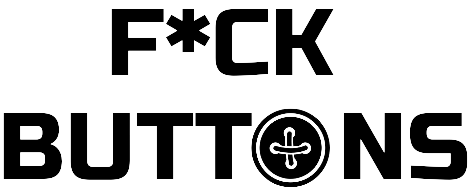Table of Contents
What are 2 types of primary safeguarding methods?
Two primary methods are used to safeguard machines: guards and safeguarding devices. Guards provide physical barriers that prevent access to dangerous areas.
How do tool guards keep you safe?
Safe Guarding Devices These devices may perform one of several functions: It may stop the machine if a hand or any part of the body is inadvertently placed in the danger area. It may restrain or withdraw the operator’s hands from the danger area during operation.
What is the difference between a machine guard and a safeguarding device?
Guards provide physical barriers that prevent access to danger areas. Safeguarding devices either prevent or detect operator contact with the point of operation or stop potentially hazardous machine motion if any part of an individual’s body is within the hazardous portion of the machine.
What is a type of machine safeguarding?
Methods of Safeguarding They can be fixed, interlocked, adjustable, or self-adjusting. Devices – these limit or prevent access to the hazardous area. These can be presence-sensing devices, pullback or restraint straps, safety trip controls, two-hand controls, or gates.
What are the three basic areas require safeguarding?
Dangerous moving parts in three basic areas require safeguarding: The point of operation: that point where work is performed on the material, such as cutting, shaping, boring, or forming of stock….Hazardous Mechanical Motions and Actions
- rotating (including in-running nip points)
- reciprocating.
- transversing.
What are the four major methods of safeguarding?
Methods of Machine Safeguarding
- Guards. Guards are barriers which prevent access to danger areas.
- Devices. Aside from guards, another common safeguarding method is that of safety devices, a few of which include:
- Safeguarding By Location Or Distance.
- Feeding And Ejection Methods.
- Miscellaneous Aids.
What are the 4 types of machine guards?
There are four general types of guards:
- Fixed.
- Interlocked.
- Adjustable.
- Self-adjusting.
What is the most common injury caused by working with machines unsafely?
laceration
The most common injury caused by using a machine unsafely is laceration.
What are the five different types of machine guarding?
Types of Machine Guards
- Fixed guards.
- Interlocking guards.
- Adjustable guards.
- Self-adjusting guards.
What are the 3 main areas of a machine?
All machines consist of three fundamental areas: the point of operation, the power transmission device, and the operating controls.
What is the nip point?
In-running nip points (or pinch points) are a special danger arising from rotating or reciprocating parts. They occur whenever machine parts move toward each other or when one part moves past a stationary object. Fig.
What are the 5 types of different guards commonly used?
Some guards also protect workers from shavings, flying shards or metal sparks created by working machines….Types of Machine Guards
- Fixed guards.
- Interlocking guards.
- Adjustable guards.
- Self-adjusting guards.
Who is responsible for safeguarding in the workplace?
The Safeguarding officer (designated person) maintains a Safeguarding report and is supported by the HR function and deputy designated persons. This policy is directly linked to the company disciplinary procedures.
Which part of the body is most commonly injured when using machinery?
Back Injuries — by far the most common result of unsafe manual handling.
What is a pullback device?
Pullback devices utilize a series of cables attached to the operator’s hands, wrists, and/or arms. This type of device is primarily used on machines with stroking action. When the slide/ram is up between cycles, the operator is allowed access to the point of operation.
How do you avoid pinch points?
Tips for Preventing Pinch Point Injuries
- • Never walk away from a machine that is turned on or coasting.
- • Discuss and point out pinch point hazards as part of your risk assessment and toolbox meetings.
- • Ensure workers use all necessary PPE.
- • Keep floors clean and free of debris to help prevent trips and falls.
What are my employment rights?
Employees have all the employment rights that workers do, as well as extra rights and responsibilities, including: parental leave and pay. Shared Parental Leave and Pay. maternity, paternity and adoption leave and pay.
What does Lite stand for?
Load, Individual, Task, and Environment
LITE is an acronym that helps you to carry out a Manual Handling Risk Assessment. It is designed to make you consider each essential area of the job you’re doing in order to improve health & safety in the workplace. The acronym stands for Load, Individual, Task, and Environment: L – Load.
Why choose Rockford systems?
With over 45 years of experience, Rockford Systems enhances the long-term health and quality of life of workers in high-risk occupations, while improving the bottom line of the organizations we serve by increasing compliance, reducing risk, lowering costs and improving productivity.
How do I contact Rockford systems customer service?
Please call 1-800-922-7533 or email [email protected] for more information on how Rockford Systems can help your organization reduce risk and improve employee safety.
How do I print the Rockford systems machine safety solutions catalog?
By hovering in the upper right-hand corner of the viewer frame, you can print, download and share the catalog. Brochure that explains the Machine Safety Solutions offered by Rockford Systems, ranging from training and education, to assessments, to standardized and customized solutions, through to installation and post-sales support.
https://www.youtube.com/user/RockfordSystems

